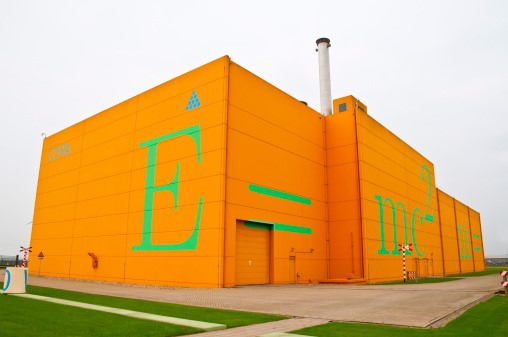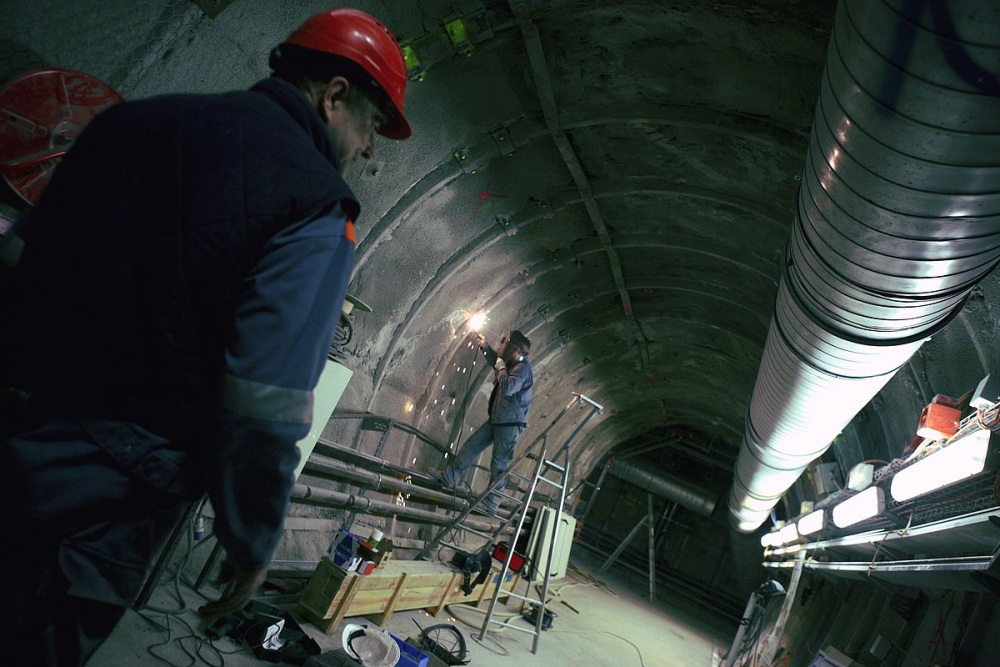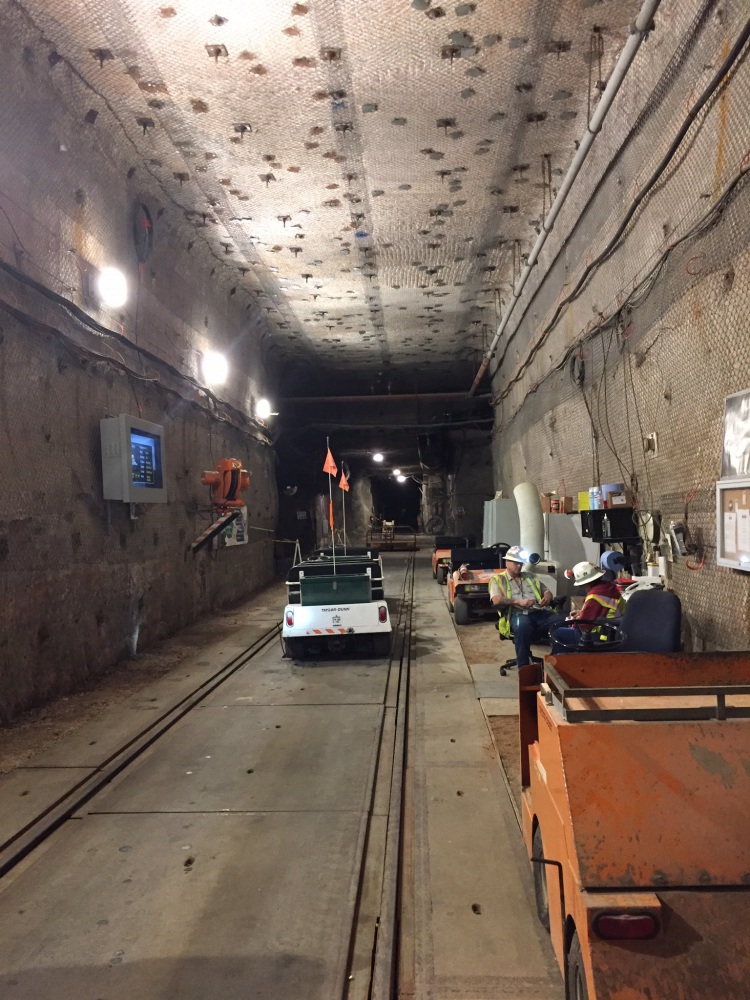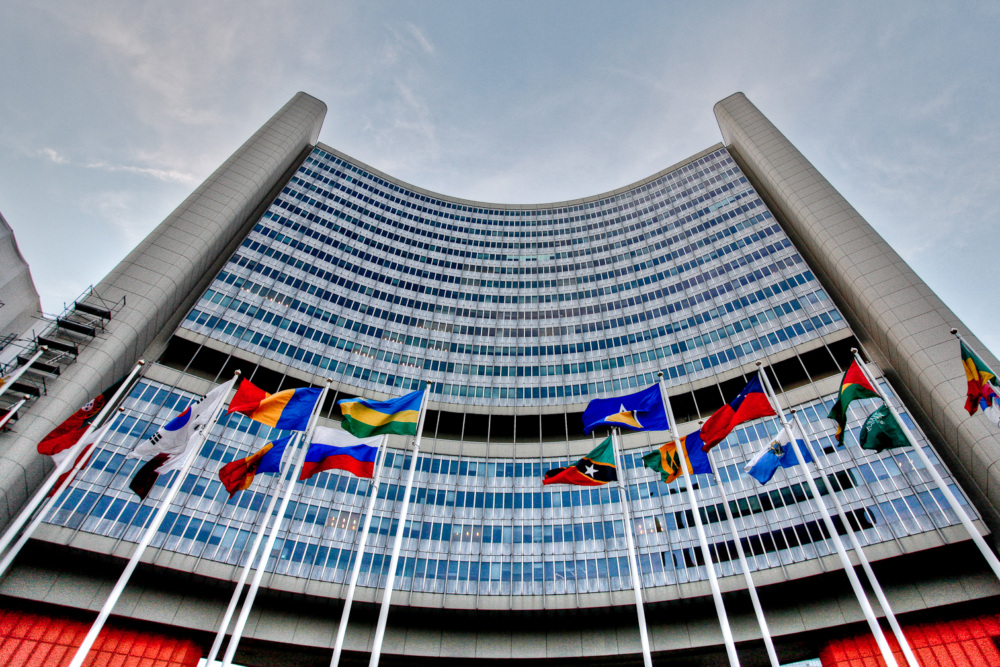
The Good, the Bad and the Extraterrestrial: The Decades-Long Struggle to Dispose of Nuclear Waste
Reaching agreement on what to do with left-over nuclear material has eluded many scientists and engineers, politicians and publics for decades.
Atomic Pulse
This post was written by Grace Strelich, an intern with NTI’s International Fuel Cycle Strategies Program. Originally from Santa Barbara, California, she graduated from the University of St. Andrews in 2019 with joint honours in International Relations and Modern History.
About 10% of the world’s electricity comes from energy generated from nuclear power plants, and with this energy output comes spent nuclear fuel. This raises a vexing problem: what to do with this nuclear waste. Back in the day, comic books and Saturday morning cartoons depicted all things nuclear as a solemn but humorous new part of modern life. That retro-future approach has fallen by the wayside as we’ve moved into the 21st century, and nuclear waste is a very real and decidedly unfunny problem that requires practical solutions.
It is a problem that has challenged experts and policy makers for decades. Over the past five years, NTI has created a Pacific Rim Spent Fuel Management Partnership to address precisely this issue.
The challenge begins as soon as fuel rods have finished their work and need to be removed from a nuclear reactor. At this point, the rods are hot. Very hot. Typically, around 1400° Celsius—the same temperature at which steel liquifies. From the reactor core, the rods are placed in spent fuel pools and over time—anywhere from about five to 20 years—they cool down enough to be moved from the grounds of the nuclear plant to a more permanent location for long-term storage and then disposal. But it takes years—thousands of years—before the rods become significantly less radioactive. Since most countries do not yet have a permanent storage and disposal site, spent fuel is remaining at the reactor sites’ filling pools or staying in hardened containers that are safe for decades but not forever.
There are a few options once the fuel rods are ready to be moved from the pools—and this is where underground research laboratories (or, URLs) become vitally important to the safety and security of this spent fuel.
Though they may sound like they are out of a cartoon villain’s lair, URLs are actually experimental hubs that “enable research and technology development activities to be conducted under subsurface conditions and at scales relevant to specific repository environments.” The labs are often built inside former mines (iron, salt, uranium, etc.), though some are built from scratch. To serve as a permanent nuclear waste repository, any site needs first to be thoroughly studied. URLs are designed to provide proof-of-concept for repositories, to demonstrate on a smaller scale that the geology for a potential repository will work as expected. Research at Whiteshell, a former URL in Canada, for example, enabled the development of a mathematical model to analyze the long-term geologic evolution of the host rock, including its resilience against earthquakes, glaciation, and heat generation. At the Kamaishi URL in Japan, the “residence time” of groundwater was tested to determine rate of water migration throughout the rock.
URLs can be generic or site-specific. As the name implies, generic URLs are for general study. At Kamaishi, which was constructed on the understanding that it would never be considered as a repository site, researchers worked on the development of techniques for assessing earthquake impact on the deep geological environment—information that was relevant to many applications, not just nuclear waste storage. Site-specific URLs are situated in the same rock-type, and sometimes the same rock formation, as the proposed repository. In the United States, the Exploratory Studies Facility (ESF) URL was purpose-built within Nevada’s Yucca Mountain project area to support the expected licensing and construction of the nation’s first spent fuel repository. Among the experiments conducted at ESF, researchers examined water seepage by looking at opal and calcite buildups. This was important because it was difficult to monitor water flow in that climate and hard to confirm water presence in areas disturbed by borehole construction. The presence of opal and calcite indicated a stable hydrologic environment over a long period of time and showed researchers how Yucca Mountain had responded to past changes in the climate.
Fracture matrixes, created in the rocks either naturally or from mining, also are vital to study. These fracture zones can provide pathways for radionuclides to travel up to the surface, releasing radiation and contaminating ground water. By understanding these fractures, as well as the rock’s ability to seal, scientists and engineers can determine whether a specific geology is viable for spent fuel disposal.
Although URLs provide crucial data on rock fractures and radionuclide migration, no site can provide perfect containment based only on geology. URLs also enable testing of engineered barriers which also are crucial to the operation of a repository. For example, the Pacific Rim Spent Fuel Management Partnership’s URL working group is looking into specific technical questions around using bentonite in a repository which builds on work already being done as part of an international collaboration called DEvelopment of COupled Models and their VALidation Against EXperiments (DECOVALEX).
URLs can also serve as centers of international cooperation. As URLs are expensive to construct and this sort of research and testing is costly, complex, and time-consuming, a multinational setting may be an efficient way to achieve common objectives.
Nuclear power is a vital part of the energy mix to ensure a more sustainable world, and managing the waste is a complex but not impossible challenge. URLs provide countries with technical knowledge and increase confidence that waste disposal can be carried out safely and securely.
Sign up for our newsletter to get the latest on nuclear and biological threats.
Reaching agreement on what to do with left-over nuclear material has eluded many scientists and engineers, politicians and publics for decades.
Pink Salt, Seven-Foot-Thick Walls, and State-of-the-Art Centrifuges: A Trip to America's Nuclear Corridor
Governments should use the 2024 International Conference on Nuclear Security (ICONS) to reaffirm their commitment to preventing nuclear catastrophe.


